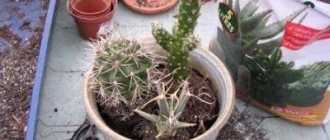Asparagus is a tropical herbaceous plant native to South Africa and Madagascar. It is quite unpretentious, grows quickly, so it is often grown in apartments. It can be seen in public places and offices. Flower growers place the plant in hanging pots so that it is not exposed to direct sunlight. But with improper care or disease, asparagus turns yellow and its leaves fall off. How to fix it?
What to do if aspargus turns yellow and crumbles?
Asparagus cannot be called a plant that requires special habitat conditions.
But there are still simple rules that should not be ignored.
So why do Asparagus leaves turn yellow and fall off?
There are several causes of this disease, by eliminating which and providing proper care for the flower, you can bring the flower back to life:
- Excessive watering;
- Insufficient or excessively bright light;
- Overdrying of the earthen coma;
- Low humidity (dry air) indoors;
- High temperature in the room;
- Filling the space of the pot with roots.
If a disaster occurs and the asparagus leaves fall off, don’t panic.
The first step is to trim off the bare shoots left behind, and then move the pot to optimal conditions for the plant.
Why does a flower wither?
Even such an undemanding green pet as asparagus can suddenly become ill. In this case, various symptoms are detected:
- loss of shoot color saturation;
- the leaves, or rather the cladodes (transformed stems) that replace them, turn yellow;
- the green mass becomes covered with spots;
- the branches dry up;
- the plant begins to crumble.
Most often, the cause of such troubles lies in errors and omissions associated with flower care. Their consequences are usually eliminated without much difficulty. The plant will be able to recover, you just need to create optimal conditions for this. Sometimes this is possible even in cases where the above-ground part cannot be saved - the surviving rhizomes produce young shoots .
Typical mistakes in care include insufficient or excessive watering, lack of light or exposure of the plant to the scorching rays of the sun, lack of timely replanting, and dry air in the room. The diseased appearance of asparagus may also be evidence of fungus or pest infestation.
Violation of water regime
The most common varieties are Sprenger's asparagus and pinnate asparagus. They turn yellow and crumble most often due to improper watering. Its frequency and intensity should be moderate. It is equally dangerous to allow the earthen clod to dry out and to become oversaturated with moisture. Excess water in the soil leads to rotting of the rhizomes and subsequent death of the entire plant. In addition, maintaining elevated soil moisture levels creates favorable conditions for the development of fungus, bacterial infections and the appearance of insect pests.
The thickened rhizomes of asparagus accumulate certain reserves of moisture, and the needle-like structure of the above-ground part prevents its excess evaporation. Therefore, in general, the plant satisfactorily tolerates some interruptions in watering. But it is the lack of liquid that becomes a common reason why asparagus turns yellow. The indoor flower is depleted, because in such conditions, in addition to water, it does not receive enough nutrients it needs for normal growth, flowering and fruiting. This is why it is so important to normalize the water regime. In this case, you need to adhere to certain rules:
- Watering is carried out as needed, taking into account weather conditions and room temperature.
- In the spring and summer, asparagus is watered at least 3-4 times a week. In winter, when its active growth stops, the soil needs to be moistened less often.
- To determine the degree of soil moisture, you should feel it. If you feel dry, then it’s time to take up the watering can.
- After watering, the top layer of soil must be loosened. This will prevent it from drying out prematurely and improve root aeration.
- When replanting a plant, you need to take care of drainage, which will avoid possible stagnation of liquid.
Some time after watering, the water remaining in the pan should be drained. This will prevent waterlogging and rotting of the root system. Sometimes gardeners leave the tray filled during hot weather. As the liquid evaporates, it saturates the air with moisture. Yes, maintaining its hydration at the proper level is important. But it is better to do this by regularly spraying the plant with a spray bottle. For these purposes, they also use moistened pebbles, peat, moss and other materials laid out at the bottom of the tray.
You need to monitor air humidity not only in summer. Central heating also has a drying effect. Therefore, during the heating season, it is recommended to keep asparagus away from radiators and heaters.
An important point is the application of fertilizers. Liquid fertilizing is introduced in spring and summer. It is better to use universal complex supplements. Do this according to the instructions twice a month. During the dormant period, the plant should be fed only if its appearance deteriorates.
Incorrect lighting
Asparagus is a light-loving plant.
Therefore, it is advisable to place it on the sunny side. The light should be bright, but diffused - direct sunlight is unacceptable. Under the scorching sun, asparagus leaves will develop burns or burn out completely. Significant shading is another common reason why asparagus leaves turn yellow. In this case, you need to move it to a more illuminated place or remove the plants that are interfering with it. This is an ampelous flower that is best kept in a hanging container. In warm weather, it can be exposed to the air. In this case, not only aggressive ultraviolet radiation should be avoided, but also drafts.
The optimal temperature during the growing season of asparagus is +23ºС with slight deviations in both directions. In winter, when the flower is resting, it should be kept at +15ºС. Hypothermia is just as dangerous for him as significant overheating.
The need to replant the plant
Asparagus rhizomes grow very quickly. Therefore, young individuals require annual transplantation into a larger container. If this is not done, then the roots will become crowded, which will inevitably affect the condition of the flower - it will stop growing, begin to wither, turn yellow and may die from lack of nutrition and moisture. Mature plants are replanted every three years. This is usually done in the spring. But if roots have come out through the drainage holes in the pot, then you should not postpone the procedure.
To remove a flower from a flowerpot, you need to turn it over, holding it at the base, and thoroughly tap the container on all sides, including the bottom. The exposed root system should be inspected for the presence of weak, dead or rotten rhizomes. All this is removed. The heavily overgrown root is partially removed. About a third of the root mass can be cut off without any damage to the plant. If there are several individuals in the pot, it is better to separate them. All cut areas are treated with crushed coal.
To plant the plant you will need a slightly larger pot and fertile soil. Usually they use turf and deciduous with the addition of sand, but you can also use universal. Powdered or granular fertilizers can be applied at this stage. They are simply mixed with the ground. They will subsequently dissolve during watering.
A drainage layer must be placed at the bottom of the pot. It can consist of various materials:
- expanded clay;
- pebbles;
- rubbed polystyrene foam;
- clay shards;
- crushed brick.
It is sprinkled with soil, then the prepared plant is installed. All that remains is to fill the soil, squeeze it a little and water it. Now you need to put the flower in the light and leave it alone for several days until it recovers.
During transplantation, care must be taken not to damage the lush greenery. Various pests can also live in the rhizomes. Their timely detection is very important, since asparagus does not tolerate treatment with pesticides.
Pest infestation
There are many insects that can harm domestic asparagus.
They can cause the death of a flower. Therefore, the plant should be regularly inspected to detect and eliminate parasites. Aphids are small green or yellowish insects, clusters of which can be seen on the underside of foliage. Their presence can also be detected by a light coating that appears on the cladodes. When asparagus is infected with aphids, its green mass must be thoroughly treated with a solution of natural laundry soap. Before starting the procedure, the pot with soil is wrapped in a bag. Some time after treatment, the plant is washed with running water.
Spider mites are red-colored pests that measure less than a millimeter in size. A clear sign of damage to the plant is the presence of white cobwebs. It should be borne in mind that if there are few ticks, the spider web may not be visible. Both adults and larvae feed on sap, sucking it from the leaves. As a result, it turns yellow, dries and flies off. To destroy parasites, you should treat the flower at least 2-3 times with an interval of 5 days, giving preference to folk remedies (infusions of dry potato tops, shag, onion peels, etc.).
Thrips are dark-colored insects whose length reaches 5 mm. They attack weakened plants that lack proper care. When infected with them, spots and whitish stripes appear on the leaves, devoid of green pigment. Cladodes and stems lose their shape and become bent. The growth of asparagus slows down and its immunity is weakened. In this case, it would be most preferable to treat the flower with infusions of hot pepper, celandine, and yarrow.
Scale insects are small grayish insects that often appear in hot weather with high levels of dry air. In this case, light growths form at the base of the leaves, the plant turns yellow and crumbles. The parasite feeds on plant sap, which quickly leads to the death of the flower. You can get rid of the scourge using soap-oil emulsion, garlic-onion tinctures and other compounds.
If folk remedies turn out to be ineffective, only then should you resort to chemistry. But first it is recommended to test the drug on a small area of the plant. Regularly spraying the flower with plain water is an excellent prevention of the appearance of most parasites.
Watering mode
Asparagus (asparagus) is watered abundantly, however, no more than 3 times a week.
It is best to do this immediately after the top layer of soil has dried - this is determined by the touch of a finger. Care must be taken to ensure that water does not remain in the pan after the procedure.
In winter, the intensity of watering is reduced, doing it a few days after the soil dries. There is no need to let the soil dry completely.
Caring for asparagus that has begun to turn yellow or crumble
First of all, no matter how deplorable the situation may be, you should not part with your beloved pet.
If you immediately find out the cause of wilting and make adjustments to its care, you can revive an almost hopeless plant that has lost all its greenery. As practice shows, most problems are caused by errors in caring for asparagus or forgetfulness of the owner. Even the hardiest plant, accustomed to living in the dry air of an apartment, irregular or excessive watering, a cramped pot and other inconveniences, sooner or later requires human attention. Asparagus is no exception; a patient crop does not immediately respond to discomfort by stopping growing and turning yellow.
What to do if asparagus dries out? Only by creating comfortable conditions for him can you be confident in the health and constant beauty of your pet. And even a plant that has begun to dry out will begin to grow again. Therefore, it is necessary to correct the situation by analyzing the conditions under which the plants are kept.
On this topic:
Raspberry anthracnose - saving the bush from a dangerous...
Jun 3, 2019
Rhododendron diseases - veiled dangers
Jun 2, 2019
BACK FORWARD 1 of 77
There may be several reasons why asparagus turns yellow and its “leaves” or phyllocladies fall off.
If asparagus falls off due to a chronic lack of moisture, the dried stems are cut off and gradually begin to moisten the soil in the pot. Dry soil is poorly saturated with water, so it is better to make several approaches. Over and over again, the substrate will get wet deeper and deeper until the moisture saturates the entire volume of the pot, and its excess comes out into the pan.
It is best if the soil under the asparagus dries out between waterings, but does not turn into stone. The root system of a plant is designed in such a way that sufficient water nutrients accumulate in the nodules “in reserve,” but such accumulations also end. In addition, their depletion leads to a cessation of growth, which means that there is no need to wait for new leaves.
Excessive soil moisture also negatively affects asparagus. In a constantly humid, warm environment, insects, bacteria and fungi easily multiply, which threatens the invasion of pests and diseases of asparagus. Its powerful root system rots, and the fact that asparagus turns yellow turns out to be a consequence of the disease.
Therefore, when caring, it is extremely important to take into account the soil moisture at the time of watering, the air temperature in the room, because the plant “drinks” less when it’s cool, and the season. As a rule, specimens producing new shoots, flowering and setting fruit experience a greater need for moisture and nutrition
Dry indoor air is harmful to most indoor plants, including all types of asparagus. Even periods of drought in nature are not as destructive for plants as running heating devices in an apartment. Therefore, asparagus standing on window sills or near radiators turn yellow even with continued care and watering.
You can stop the process by moving the pot away from the rising flow of hot air, and also by using all available means to humidify the air in the room. This will be useful not only for the flower, but also for people whose respiratory system and mucous membranes also dry out and cease to resist viral and colds.
When looking for a place for asparagus, it is worth remembering that not only hot air is harmful to this plant, but also drafts. Therefore, when wondering why asparagus turns yellow, you need to check whether it is blowing on it from a transom.
The optimal place for asparagus in an apartment is partial shade or a sunny windowsill, where the flower is protected from direct light. If the created conditions suit the plant, its cladodes are compact and lush. In the shade, the shoots lengthen, and the phyllocladies on them are sparse. When there is a catastrophic lack of light, for example, the pot is placed far from the window, even with proper care, the asparagus turns yellow and loses its foliage.
On this topic:
The destructive anthracnose of grapes capitulates to experienced...
Anthracnose of cucumbers - how to recognize and how to treat
Gooseberry anthracnose - identify the disease and save...
Strawberry anthracnose is a dangerous quarantine disease
BACK FORWARD 1 of 40
But the bright sun is not a plant’s best friend. It leaves burns on the greenery, causing the asparagus to fall off in a matter of days. The situation can be corrected by rearranging the pot and adjusting, if necessary, watering your green pet.
Lighting
Asparagus loves a well-lit room with protection from direct sunlight. The best place for it would be east or west windows. In the south, you can keep it not on the windowsill itself, but nearby, providing shading during the midday heat.
In summer, the flower can be taken out into the fresh air, but the place is chosen in partial shade, where it will not be exposed to direct sun.
ATTENTION! Exposure of asparagus to direct rays threatens the leaves with sunburn, which will cause them to turn yellow and fall off.
What to do with drying asparagus?
When the yellowness of the asparagus is not strong, for its recovery it is often enough to resume watering, remove the plant from the shade or, conversely, move it away from the sun, humidify the air or feed it. But a seriously ill asparagus plant needs special, comprehensive care. All lifeless stems are cut off from the drying asparagus, and then after pouring the earth well, it is useful to remove the plant from the pot and subject it to a thorough inspection.
If the roots are affected by rot, have dried out and will no longer revive, such areas must be removed, leaving only light, dense nodules that are still capable of producing new shoots. If necessary, the root system can be carefully divided and several young seedlings can be obtained at once, which will grow in a short time and become a decoration of the house. Asparagus plants planted in a nutritious loose substrate are watered and the soil on top is mulched. The roots that have retained their vitality, if you follow the rules of caring for asparagus, will soon manifest themselves and sprout new shoots.
Humidity
The plant loves moist air; its dryness is one of the main reasons for yellowing and falling of asparagus.
In summer, the branches must be sprayed with settled water from a sprayer.
The most favorable time for this is in the morning at dawn or in the evening at sunset.
ADVICE! If the problem of low humidity is particularly acute (for example, during the heating season in winter), the pot can be placed on a tray with damp expanded clay or moss. This will saturate the air near the flower with additional moisture. There is no need to interrupt spraying.
Occasionally you can take a bath in the bathroom under the shower. During the procedure, the soil is protected with a bag from tap water getting into it.
The air is too dry
Asparagus is a resident of the tropics, so it is best adapted to existence in humid air.
If the air around the plant is too dry, the flower quickly reacts by drying out and curling its leaves. It all starts with the edge of the leaf drying out, which then turns yellow and after a while curls and falls off.
To maintain the health and beauty of the plant, it should be sprayed in the summer heat and in winter, when the heating devices are turned on. This will increase air humidity and provide the plant with optimal living conditions.
Transfer
The signal for replanting is the sprouting of roots from the holes in the pot.
A young plant needs to be replanted annually - its roots grow very actively and quickly fill the entire container.
As soon as the flower is 4-5 years old, it is enough to replant it once every 2-3 years. If asparagus is not planned to be propagated by division, then with each procedure the pot is selected 2-3 centimeters larger than the previous one.
Moderate root trimming is allowed. A thick layer of expanded clay drainage is poured into the bottom of the new pot, and the soil is mixed from two parts of leaf and humus soil and one part of sand.
Within 5-7 days after transplantation, the plant adapts to the changed conditions and recovers from the stress it suffered. During this period, it is best not to feed it, not water it, or expose it to bright light.
Why do leaves turn yellow and fall off?
There are many reasons for this:
- Lack or excess of moisture . Asparagus prefers regular moderate watering. Therefore, drying out of the soil leads to the shedding of leaves. Initially, it begins to turn yellow and only then falls off. But it’s not just the lack of moisture that can cause problems. If there is an excess of it, rotting of the roots may begin, to which asparagus also reacts by shedding its leaves.
- Inappropriate lighting . Asparagus is a light-loving plant. But not all lighting is suitable for him. Dispersed would be ideal. If it is in the bright sun for a long time, burns appear on it. They look like dry or yellowed leaves. In the same case, when the plant lacks light and is located in the shade, its leaves become dull, faded and soon turn yellow and fall off.
- Dry air . The plant does not like too dry air; it reacts to such conditions by curling and shedding its leaves. First, the edge of the leaf dries out, after which it turns yellow and falls off after some time.
- Lack or absence of feeding . If you do not apply fertilizer in a timely manner, then over time this will affect the appearance of the flower. At first the leaves turn pale, then they may turn yellow and fall off. In conditions of acute nutrient deficiency, the plant dies.
- No transfers . Due to the fact that the plant’s root system develops quickly, it becomes cramped in an old pot. Eventually the flower slows down and begins to lose leaves.
- Pest infestation . In most cases, insects and bacteria do not just coexist with the plant, but parasitize it, feeding on its sap. Under favorable conditions, the colony will expand and eventually lead to the death of the asparagus.
Pests
Asparagus can be affected by aphids, scale insects or spider mites.
IMPORTANT! Pest control can be a serious problem - this plant does not tolerate insecticide treatments very well. Therefore, it is optimal to identify them in the early stages of infection.
Aphids are small green or yellow insects. They live most abundantly on the underside of leaves, where they can be seen without much effort. Signs of aphids are the presence of a whitish coating on the leaves, in which fungal diseases appear without treatment.
Before treating the plant, wipe it with a sponge and soapy water.
Apply chemical spraying carefully, after first checking the reaction of the flower on one branch.
The scale insect is a parasitic insect that feeds on plant sap. They stick to the leaves and trunk, which leads to their drying out.
A sign of scale insect infestation is the appearance of brown, raised blisters on the leaves.
Adult scale insects are removed from the plant manually with a sponge or cotton swab. After this, the entire plant is washed with soapy water. If the scale colony is large, spraying with chemicals may be necessary. Before planting, you must check the plant’s reaction.
Spider mites are red insects. Its sign is the appearance of a white thin web on the leaves of the plant.
When fighting them, the flower is actively treated with a soapy sponge. There is no need to wash off the soap right away - it is best to wait 3-4 hours to ensure the death of the pest.
After water procedures, the plant is placed in a plastic bag to create a zone of high humidity.
IMPORTANT! The causes of yellowing and falling of asparagus leaves are usually a gross violation of the care regime. This may be excessive or insufficient lighting, overwatering or drying out the soil, or low humidity.
If a disaster occurs, you need to prune the affected branches and optimize the conditions. In addition to diseases, the plant can be affected by pests, and combating them is difficult due to the undesirability of using chemicals.
If you want to see asparagus on your windowsill or on your property, then you can read information about growing from seeds, as well as about caring for the plant.
Lack or absence of feeding
If asparagus grows in a low-nutrient substrate, and feeding is not carried out or the flower is rarely fed, the lack of nutrition affects its appearance. First, its leaves turn pale and lose their intense green color. Then they may even turn yellow. Everything ultimately leads to the falling of leaves, and after some time to the death of the flower.
Asparagus in spring, summer and early autumn must be fed at least 2 times a month. This will ensure good color and density of its greens.
Transplantation and propagation of feathery asparagus
Asparagus has fast-growing roots, therefore, as already mentioned, a young plant is replanted every year, and an adult plant once every 2-3 years, while all dried shoots and part of the root system are removed. They are replanted using the transshipment method, as this is less traumatic for the roots. The process follows the following algorithm:
- Pick up a pot. It should be slightly larger in size than the old one, but not too spacious, so as not to stimulate the roots to grow too actively, which will negatively affect the decorative appearance of the bush.
- Place a drainage layer on the bottom of the pot, and pour a small layer of fresh soil mixture on top.
- A couple of days before replanting, water the plant so that the soil is loose and easy to remove from the pot.
- Carefully remove the flower from the old container. Inspect for damage, trim them with clean pruning shears and treat with crushed charcoal or other antiseptic.
- Taking care not to damage the roots, place the bush in a new pot and fill the remaining space with soil. You should leave free space up to the top of the pot, as the growing root system raises the soil higher.
- Pour in soft water and place in a warm, lit place.
Reproduction occurs by cuttings, dividing the root system and seeds:
- Cuttings are the most difficult type, since the shoots take root poorly.
- Reproduction by dividing the roots is quite painful for the flower and is justified only for heavily overgrown plants. It is carried out according to the replanting algorithm, but after removal from the old pot, the root system is divided into several parts and treated with an antiseptic. The pots are selected small so that the plant does not waste energy on growth, but can restore its roots. Small bushes can hurt for a long time after transplantation and require very careful care.
- Obtaining new plants from seeds is a fairly common method.
Seeds can be purchased at the store or collected from overripe flower fruits if flowering can be achieved. Sow according to this algorithm: - soak the seeds in a solution of potassium permanganate for 3 days;
- prepare a soil mixture - store-bought soil is good for ferns;
- immerse the seeds at a shallow depth;
- pour with warm soft water;
- cover with film, which must be removed briefly every day for ventilation;
- place in a warm place with diffused light;
- seedlings will appear in a month;
- when their height is about 15 cm, they can be transplanted into pots.
choose a wide container for sowing;











